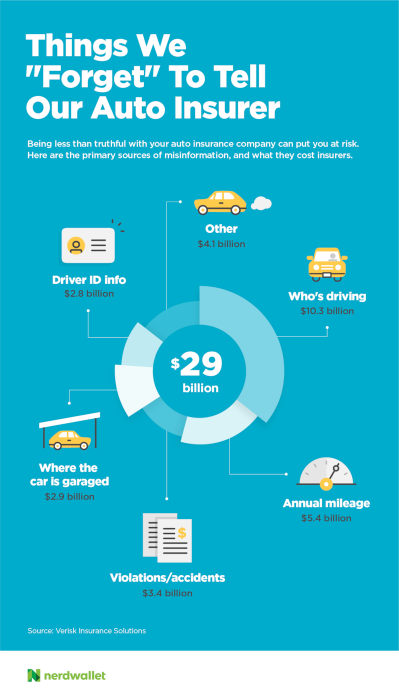The years following college graduation aren’t always known for savvy financial moves. Living with parents, maybe. Student loan debt, yes.
Call it a pipe dream, but what those years should be known for is investing. It’s hard to overstate how valuable your 20s are, but on the long, long roadto retirement, saving throughoutthat decade is kind of like putting an extra engine in your car. Say you wait until age 30 and invest $100 a month for35 years; you’d put away over $42,000, but end up with $181,000.Invest $100 a month during your 20s, and you’d save only $12,000, but wind up with over $200,000 at age 65. (Note: This assumes youearn a 7% average annual return.) For that growth, you can thank the magic ofcompound interest. The problem is coming up with the money and figuring out how to invest it. On a starting salary, even $100 a month can feel like a tight squeeze, and acollege education oftendoesn’t coverinvesting 101. More from NerdWallet Great investors all have these essential traits Great investors all have these essential traits Good investors are able to resist the influence of these 5 things on their investing decisions … can you? These 3 fantasy football strategies also work for investing These 3 fantasy football strategies can also work for investing Some tricks used to win at fantasy football can also help you be a better investor. Everyday investors should avoid ‘sexy’ investments Everyday investors should avoid ‘sexy’ investments Here’s why you probably shouldn’t consider “alternative” investments for your portfolio? Fear and greed can undermine your investment strategy Fear and greed can undermine your investment strategy The internet has made us think we can figure out everything on our own, but can we? These are the best investing apps of 2016 These are the best investing apps of 2016 Don’t have an investment strategy? No problem. There are apps that will create one just for you. How to invest $500 How to invest $500 If investing feels like a rich person’s game, it’s not your imagination. But that doesn’t mean you should sit on your hands. Here are 2016’s best online brokers for stock trading Here are 2016’s best online brokers for stock trading Here are our picks, divided by category to help you quickly find the right online broker for you. Best Roth IRA accounts: 2016’s top picks Best Roth IRA accounts: 2016’s top picks Whether you’re opening your first Roth IRA or transferring to a new broker, NerdWallet has selected the best providers by category. Here are five tips to help you invest in your 20s.
1. Acceptyour employer’s generosity
A401(k)is a tax-advantaged retirement account, which meansyou can contribute directly from your paycheck pretax. Employers that offer this benefitoftenalso match contributions up to a certain percentage of your salary.To be clear: Some employersgiveyoumoneyjust for saving for retirement. If your company offers a match, you should contribute enough to get themaximum, orwork your way up to that.
If a 401(k) isn’t an option, or you’re already earning a match,see if youmeet the income requirementsfor aRoth IRA.Unlike a traditional IRA or a 401(k), it won’t give you a tax break on contributions, but it offerssomething potentiallybetter: You won’t pay federal taxes when you pull money out in retirement. That’s right, yourcontributions and investment earnings grow tax free. » MORE:Roth IRA vs. traditional IRA: Which is best for you?
One other note here: Some companies offer a Roth version of the 401(k). If yours is one of them, you should probably take advantage. The payoff
Want a million dollars? Let’s say you earn $35,000 a year and your employer matches half of your 401(k) contributions, up to 6% of your total salary.
If you contribute 6%beginning at age 22, you’ll have over $1.2 million by 65, assuming a 7% return and annual salary increases of 3%. Without that employer match, you’d have just $800,000. And without contributions to a 401(k), you’d have — $0, of course. 2. Make risk your friend
Many millennial investors make themistake ofavoiding risk. That investment example above, where $12,000 grows into $200,000? It would require a reasonable allocation toward stocks;while investing in stocks can be riskier than say, putting your money in a savings account, over the long run stocks have shown to be a much more rewarding investment. Of course, when you invest in stock, you’ll probably see drops in the short term. That’s why the market isgenerally a no-go if you need the money within five to 10 years. But history shows us that, in the end, you’ll come out ahead for long-term investments like retirement. One reason why investing in your 20s is so important is that you’re looking at a very long term, which allows you to capitalize on all that growth. According to a Vanguard analysis, a portfolio of 70% stocks and 30% bonds — a reasonable stock-to-bond allocation for growth — had an average annual return of 9.1% between 1926 and 2015 (even withsome rocky years, including 1931 and 2008).Bonds are a safer, lower-return investment that can counter the risk of stocks. But those who played it safe and stuck strictly to bonds sawa return of only 5.4% on average within that same period. The payoff
Let’s use thesame 401(k) scenario in the last example. The difference between a 9.1% return and a 5.4% return is close to $1.3 million. It’s not reasonableto count on a 9% return, but you can take appropriate risk and hope for the best. » MORE: How to invest your 401(k)
3. Keep it simple with index funds or ETFs
The best way to invest in stocks or bonds is through index funds or exchange-traded funds. These funds hold pieces of many investments, and they’re designed to mimic the performance ofan index. An index tracks the performance of a portion of the stock market; for example, the S&P 500 tracks 500 of the largest companies in the U.S. Instead of buying the stocks of all of those companies — or even buying individual stocks, period, which takes more time and research than most of us want to commit — you can buy into an S&P 500 index fund that holds shares of those stocks. The idea is to invest in several of these funds within your 401(k) or IRA to build a diversified portfolio that includes U.S. stocks, international stocks and a small allocation of bonds. For each fund, you’ll pay an expense ratio, which covers the cost of running the fund. A 401(k) will have a small, curated list of fund choices. In general, you can decide between two funds in a category — an example of a category would be U.S. large-cap, or large company, stocks — by going with the one with the lowest expenses. A tough roadblock for newIRA investors are fund minimums, where funds require minimum investments of $1,000 or more. A 401(k) allows you to avoid that. An IRA workaround: ETFs don’t have minimum investment requirements. These funds trade like a stock throughout the day and are purchased for a share price, which for some funds can be as low as$50. That can get you in the door of several ETFsfor very little money. The payoff
Not to question your stock-picking skills, but researching, selecting and managing individual stocks is challenging — even the pros can screw this up. Going with index funds could easily save you a few hours, or roughly six Pokemon Go sessions, a week. » MORE: How to invest $500
4.Get help managing your money
An index fund makes investing easier, but if you still need help, you’re lucky to be living in an age when you can get it for cheap.
With a401(k), that help is typically available through a target-date fund. This type offund adjusts to take less risk as you age. You can pickoneby usingthe date in its name, which is supposedto line up as closely as possible to when you plan to retire. So if you’re 25 now, for example, you’d add around 40 years and pick a fund tagged 2055 or 2060. You’ll generally pay higher expenses in a target-date fund, but some investors find the simplicityis worth it. Keep in mind thatyou can always swap to a different fund later.
If you’re investing in an IRA, you could open that account with a robo-advisor, which is a computer-based investment management company. These companies charge a percentage of your account balance for their services.Many big players such asWealthfront and Bettermentcost less than 0.50%, and that includes investment expenses and management fees. The payoff
Target-date funds have an average expense ratio of 0.57%; stock index funds average just 0.11%. Robo-advisors, as noted, might cost a total of 0.50% of your investments. But a little oversight and a buffer against your own mistakes earns you peace of mind, which could be well worth it. 5. Incrementally raise your savings rate
Starting where you are is just fine, and if that means contributing $100 or less, at least you’re putting away something. But over time, you need to save more, as $200,000 does not a retirement make. To figure out how much you should shoot for, use a retirement calculator, preferably one that gives you a monthly savings goal. Then work your way there in little jumps. One of the easiest ways to do that: Up your savings rate every time you get a raise. The payoff
Carrying through that 401(k) example, if you also increase your savings rate by half of every 3% annual raise, your balance at age 65 would be closer to $3 million.
Sign up: Get investing insights with our monthly newsletter.
Arielle O’Shea is a staff writer at NerdWallet, a personal finance website. Email: aoshea@nerdwallet.com. Twitter: @arioshea. The article 5 Investing Tips for Your 20s originally appeared on NerdWallet.















